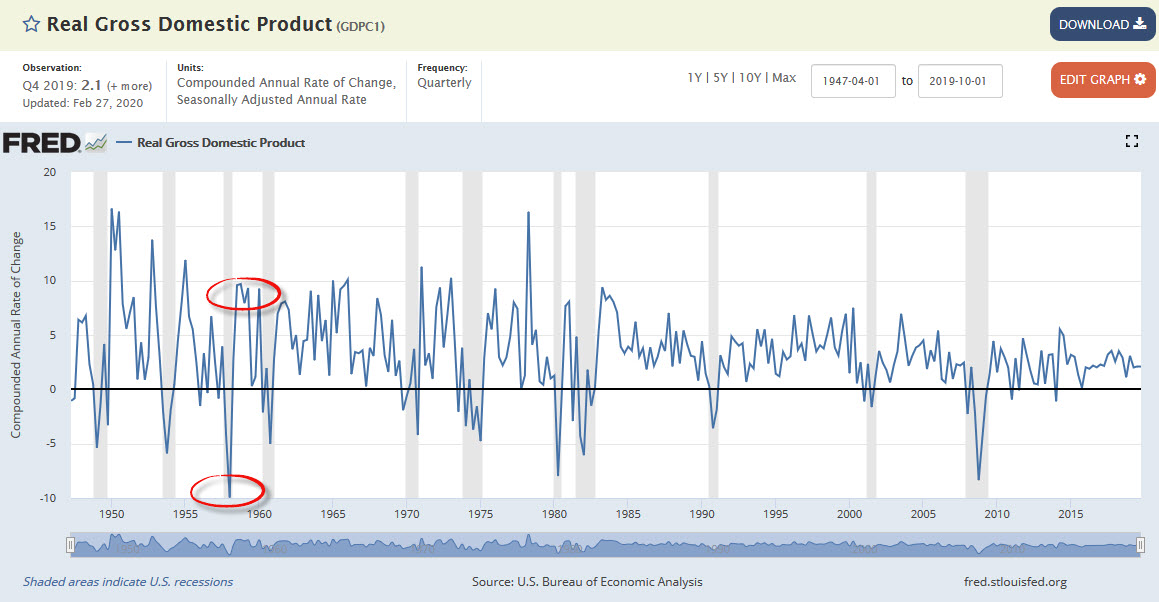The Forgotten 1957 Pandemic and Recession
The 1957 Asian Flu Pandemic killed around 70 to 100 thousand people in the United States (the 57 flu was not as infectious or deadly as COVID-19). In the last quarter of 1957 the growth rate (on an annualized basis) was -4% and in the first quarter of 1958, -10%, the largest such decline in post WWII history, bigger even than in the financial crisis. By the third and fourth quarters of 1958, however, the growth rate had surged back up to nearly 10% and for the year as a whole GDP declined by less than 1%–a bad recession, 3rd worst by depth in post WWII history, but not unprecedented.
Here’s what is interesting. Many sources don’t even list the pandemic as a cause of the recession (e.g. here, here, here, Wikipedia lists it as one among several causes). Indeed, the pandemic was soon forgotten. James Patterson’s Grand Expectations: The United States, 1945-1974 doesn’t even mention the pandemic or the recession, just the boom years of the 1950s. I am not entirely surely what to make of this. The recession was worldwide which makes me think it was the flu (deaths were low but many more people would have been sick) but this FED review from August of 1958 doesn’t mention the flu either.
